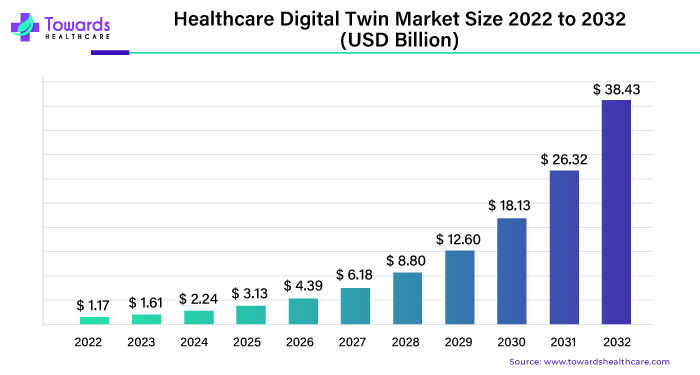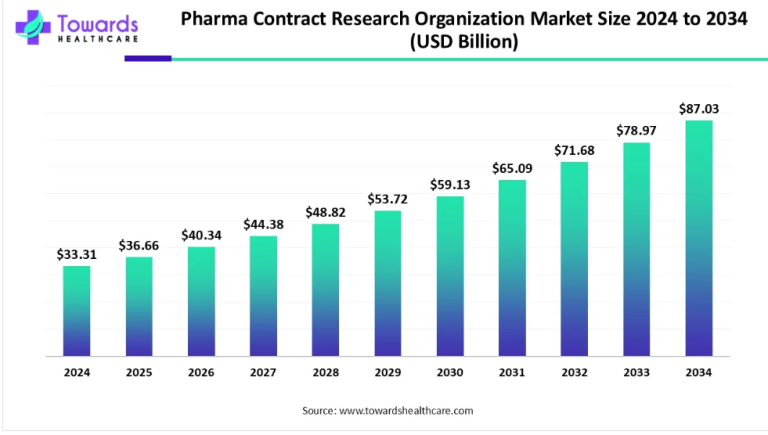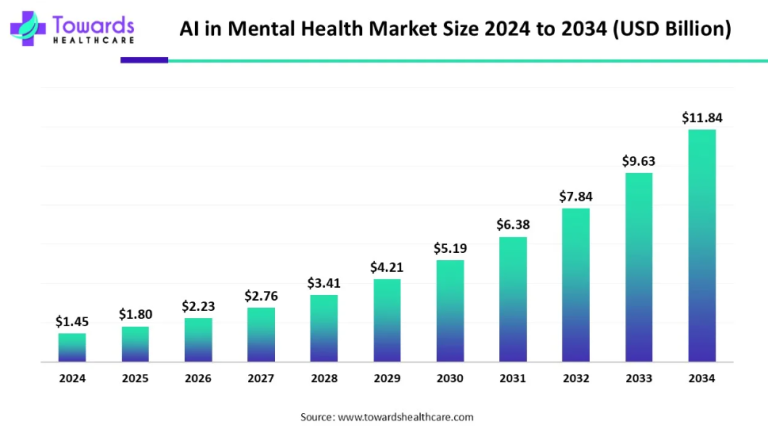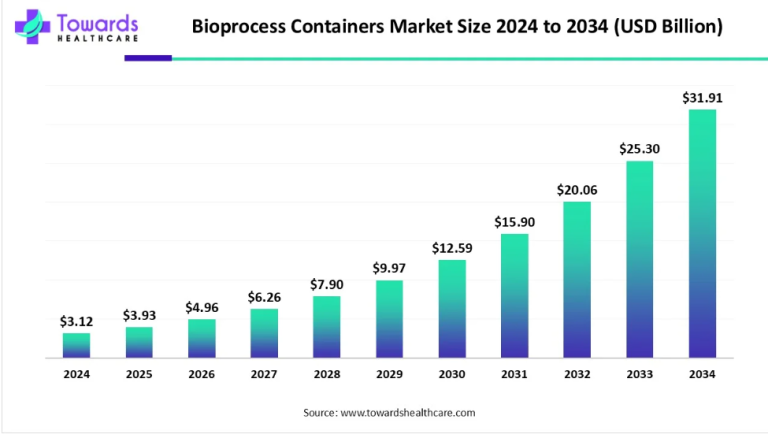
In the fast-paced world of healthcare, staying ahead means embracing cutting-edge technologies. One such innovation making waves in the industry is the concept of digital twins. The global healthcare digital twin market size was valued at USD 1.17 billion in 2022, with projections soaring to a staggering USD 38.43 billion by 2032. This article delves into the transformative potential of digital twins in healthcare and their projected growth trajectory, highlighting the key drivers, applications, and implications for the industry.
For any queries, feel free to talk with us @ https://www.towardshealthcare.com/personalized-scope/5095
Understanding the Concept: What Are Digital Twins?
Digital twins are virtual replicas of physical assets, processes, or systems. In healthcare, these digital counterparts mimic the behavior and characteristics of individual patients, organs, or even entire healthcare facilities. By leveraging real-time data from sensors, wearables, electronic health records (EHRs), and other sources, digital twins offer unprecedented insights into patient health, treatment outcomes, and operational efficiency.
Key Components of Healthcare Digital Twins
- Data Integration and Analytics: Digital twins rely on sophisticated data integration and analytics platforms to collect, process, and analyze vast amounts of healthcare data in real-time. Advanced algorithms and machine learning techniques enable healthcare providers to derive actionable insights and personalize treatment plans for individual patients.
- Simulation and Modeling: One of the most powerful features of digital twins is their ability to simulate various healthcare scenarios and predict outcomes with remarkable accuracy. From simulating the effects of different medications to predicting patient responses to treatment protocols, simulation and modeling help optimize clinical decision-making and improve patient outcomes.
- Remote Monitoring and Telemedicine: Digital twins facilitate remote monitoring of patients’ vital signs, symptoms, and medication adherence, enabling healthcare providers to deliver timely interventions and support outside traditional clinical settings. This capability is particularly valuable for managing chronic conditions, monitoring post-operative recovery, and ensuring continuity of care in remote or underserved communities.
Driving Forces Behind the Growth of Healthcare Digital Twins
The exponential growth of the healthcare digital twin market can be attributed to several key factors:
1. Technological Advancements
Advancements in sensor technology, connectivity, cloud computing, and artificial intelligence have paved the way for the widespread adoption of digital twins in healthcare. These technologies enable seamless data integration, real-time monitoring, and predictive analytics, empowering healthcare providers to deliver more personalized and proactive care.
2. Rising Demand for Personalized Medicine
As healthcare continues to shift towards a more patient-centric model, the demand for personalized medicine is on the rise. Digital twins play a crucial role in this paradigm shift by enabling healthcare providers to tailor treatments and interventions to each patient’s unique genetic makeup, medical history, lifestyle factors, and treatment preferences.
3. Increasing Focus on Preventive Healthcare
Preventive healthcare is gaining traction as healthcare systems worldwide grapple with the rising burden of chronic diseases and escalating healthcare costs. Digital twins empower individuals to take a proactive approach to their health by providing actionable insights, personalized recommendations, and early warning signs of potential health issues.
Applications of Healthcare Digital Twins
The versatility of digital twins extends across the entire healthcare continuum, encompassing a wide range of applications:
1. Precision Medicine
Digital twins enable the precise modeling of individual patients’ physiological characteristics, genetic profiles, and disease trajectories, thereby supporting the development of targeted therapies and precision medicine approaches.
2. Surgical Planning and Simulation
Surgeons can use digital twins to simulate complex surgical procedures, visualize anatomical structures in 3D, and practice intricate maneuvers before operating on actual patients. This enhances surgical precision, reduces risks, and improves patient safety outcomes.
3. Healthcare Facility Design and Optimization
Healthcare organizations can leverage digital twins to design, optimize, and streamline the layout of clinical facilities, ensuring efficient patient flow, resource allocation, and operational performance.
4. Chronic Disease Management
Digital twins empower individuals with chronic conditions to actively monitor their health status, track disease progression, and collaborate with healthcare providers to optimize treatment regimens and lifestyle modifications.
Challenges and Considerations
While the potential benefits of healthcare digital twins are immense, several challenges and considerations must be addressed to realize their full potential:
1. Data Privacy and Security
The extensive collection and sharing of sensitive healthcare data raise significant concerns regarding patient privacy and data security. Robust safeguards and encryption protocols must be implemented to protect patient confidentiality and comply with regulatory requirements.
2. Interoperability and Data Standardization
The interoperability of digital twin platforms with existing healthcare systems and devices remains a major hurdle. Standardization efforts are needed to ensure seamless data exchange, interoperability, and compatibility across disparate healthcare IT systems.
3. Ethical and Legal Implications
The use of digital twins in healthcare raises ethical dilemmas regarding consent, autonomy, and accountability. Clear guidelines and ethical frameworks are essential to address issues related to data ownership, informed consent, and liability in the context of digital twin technology.
Future Outlook and Growth Potential
Despite these challenges, the future outlook for the healthcare digital twin market is exceedingly promising. With ongoing advancements in technology, evolving regulatory landscapes, and increasing investment in healthcare innovation, digital twins are poised to revolutionize the way healthcare is delivered, managed, and experienced.
The global healthcare digital twin market is on a trajectory of explosive growth, driven by technological innovation, shifting healthcare paradigms, and increasing demand for personalized, data-driven care. By harnessing the power of digital twins, healthcare providers can unlock new insights, improve patient outcomes, and transform the delivery of healthcare services on a global scale.
Market Segments
By Component
- Software
- Service
By Application
- Personal Treatment Management
- Healthcare Facility Management
- Surgical Planning and Risk Assessment
- Medical Device Design and Testing
- Others
By End User
- Hospitals
- Pharmaceuticals and Medical Device Companies
- Research Institutes
By Geography
- North America
- Europe
- Asia-Pacific
- Latin America
- The Middle East and Africa
Take smart decision to own our advanced study @ https://www.towardshealthcare.com/price/5095
Access our Premium Real Time Data Intelligence Tool, Visit: www.precedencestatistics.com
Read More Snapshots of the Study:



